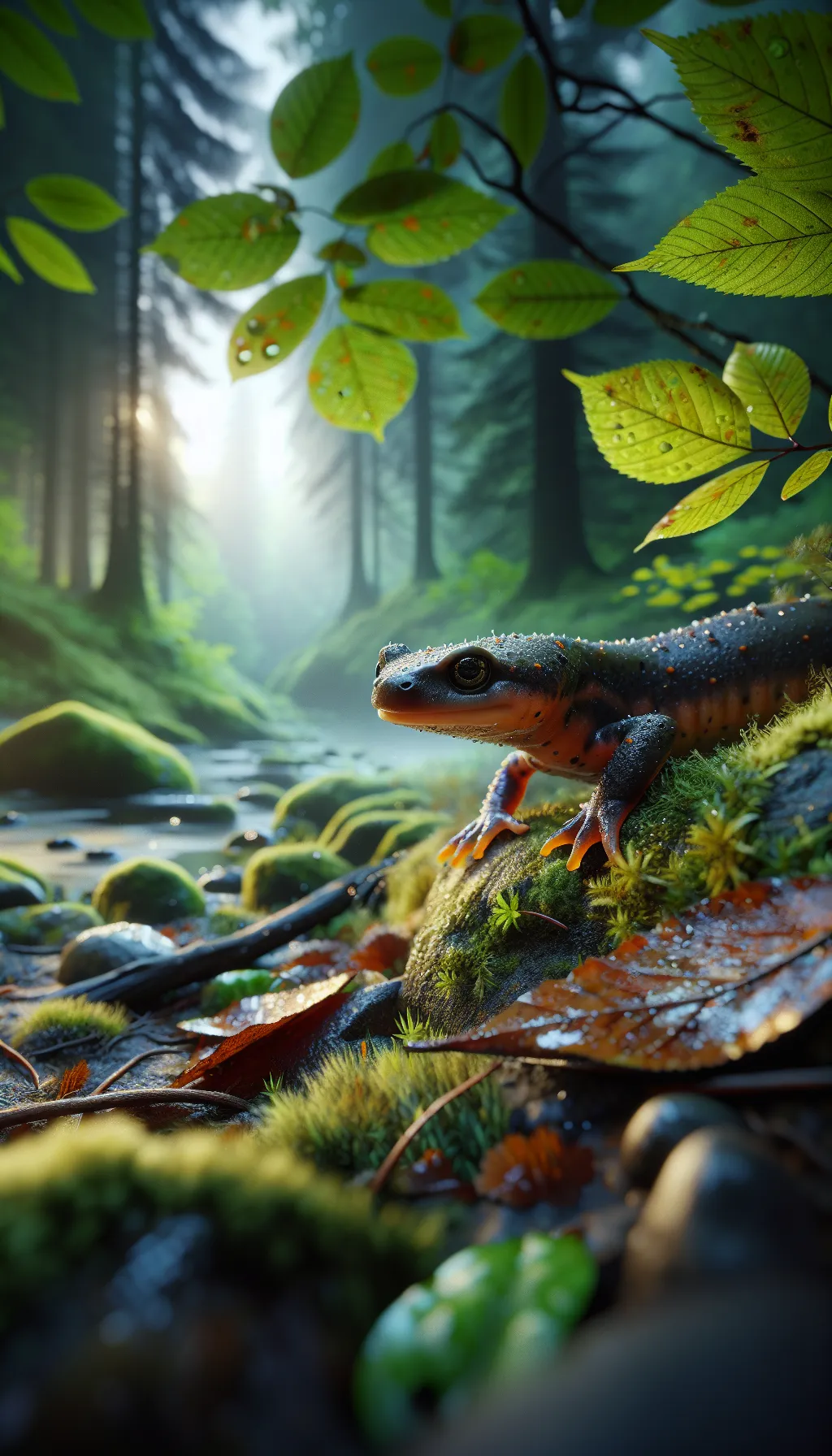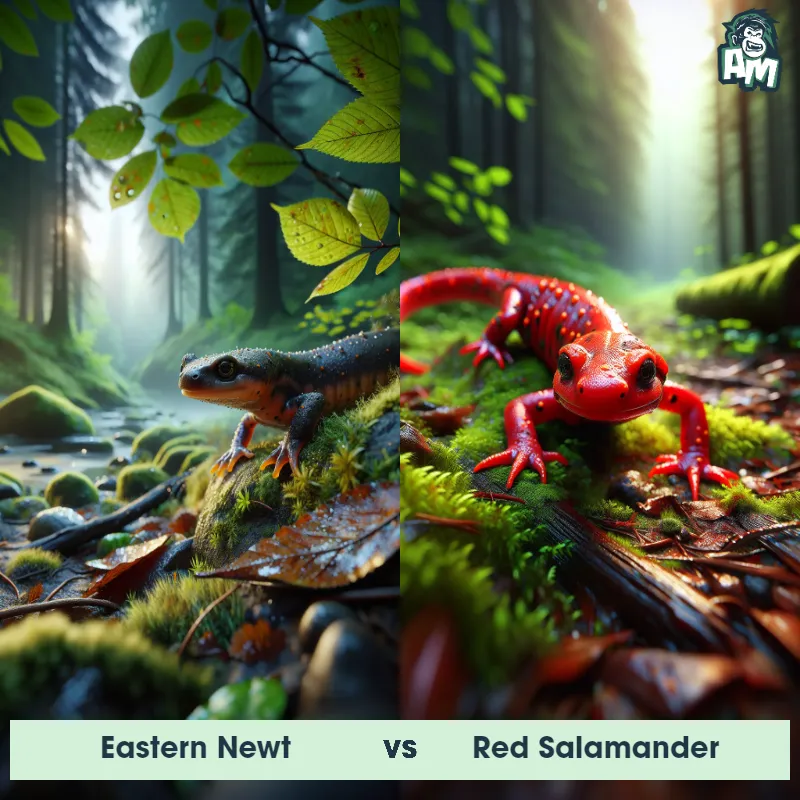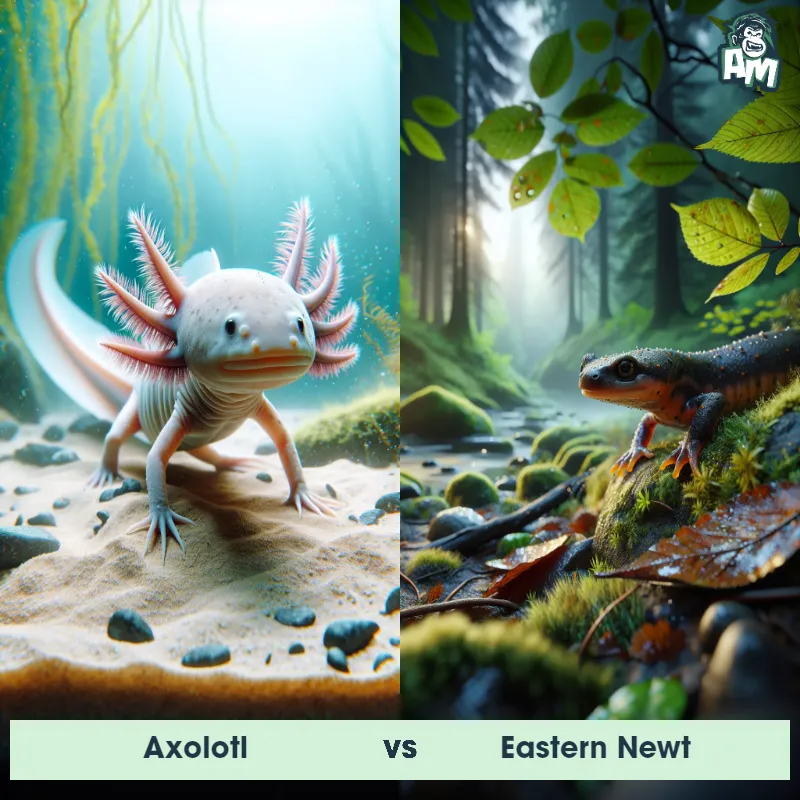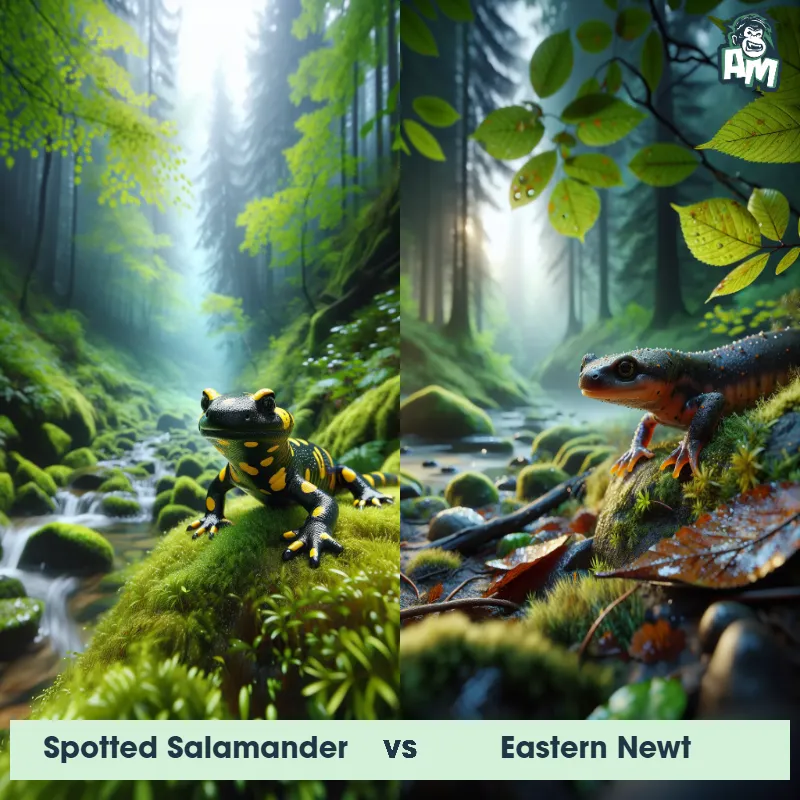The Eastern Newt
The Eastern Newt is a small amphibian found in the eastern United States. It has a bright orange or red belly, dark brown or green back, and distinctive red spots outlined in black. Known for its ability to regenerate limbs and even parts of its brain, the Eastern Newt spends its early life in water before transforming into a terrestrial adult.

| Eastern Newt | |
|---|---|
| Size | 3-5 inches (7.6-12.7 cm) |
| Weight | 1-5 grams (0.04-0.18 oz) |
| Speed | 3.7 mph (6 km/h) |
| Key Strength | Agility and speed |
| Biggest Weakness | Size and physical strength |
| Scientific Name | Notophthalmus viridescens |
| Family | Salamandridae |
| Habitat | Freshwater ponds, marshes, streams, and wetlands |
| Geography | Eastern North America |
| Diet | Insect larvae, worms, small crustaceans |
| Lifespan | 12 years - 15 years |

The Eastern Newt
The Eastern Newt is a small amphibian found in the eastern United States. It has a bright orange or red belly, dark brown or green back, and distinctive red spots outlined in black. Known for its ability to regenerate limbs and even parts of its brain, the Eastern Newt spends its early life in water before transforming into a terrestrial adult.
Fun Fact: Eastern Newts have a lifespan of 12-15 years in the wild, with some individuals living up to 20 years in captivity.
| Eastern Newt | |
|---|---|
| Size | 3-5 inches (7.6-12.7 cm) |
| Weight | 1-5 grams (0.04-0.18 oz) |
| Speed | 3.7 mph (6 km/h) |
| Key Strength | Agility and speed |
| Biggest Weakness | Size and physical strength |
| Scientific Name | Notophthalmus viridescens |
| Family | Salamandridae |
| Habitat | Freshwater ponds, marshes, streams, and wetlands |
| Geography | Eastern North America |
| Diet | Insect larvae, worms, small crustaceans |
| Lifespan | 12 years - 15 years |
Eastern Newt Matchups
We use AI to simulate matchups between the Eastern Newt and other animals. Our simulation considers size, strength, and natural predatory behaviors to determine the most likely outcome.

Can't find the Matchup you want?
Create Your Own MatchupEastern Newt: Diet, Predators, Aggression, and Defensive Behaviors
What do Eastern Newts eat?
Eastern Newts are carnivorous and primarily feed on insects, worms, small crustaceans, and mollusks. As adults, they sometimes consume small fish and amphibian eggs, while juveniles often feed on aquatic invertebrates.
Do Eastern Newts have any predators?
Eastern Newts have several predators, including snakes, birds, fish, and mammals such as raccoons and minks. Their bright orange and red-colored skin warns predators of their toxicity, making them less desirable as prey.
Are Eastern Newts aggressive?
Eastern Newts are not typically aggressive towards humans or other animals. They are relatively docile and spend most of their time hunting for food or hiding in their habitats.
Do Eastern Newts fight?
Eastern Newts do not engage in physical fights with each other or other species. They rely on their toxic skin secretions and ability to flee quickly to avoid confrontation with predators.
How do Eastern Newts defend themselves?
Eastern Newts have a unique defense mechanism where they secrete toxins through their skin, making them unpalatable to predators. The toxins can cause irritation or even be fatal to some predators, protecting the newt from being eaten.
What is the Eastern Newt's biggest weakness in a fight?
The Eastern Newt's biggest weakness in a fight is its relatively small size and lack of physical strength. While their toxic skin secretions provide protection, they rely more on avoiding confrontation rather than engaging in physical combat. Their best defense is to flee quickly to safety.
Fun Fact: During the aquatic larval stage, the Eastern Newt has external gills, which are used to help them breathe underwater.
Fun Fact: Eastern Newts are known to secrete toxic skin secretions as a defense mechanism against predators, making them unpalatable to many would-be attackers.













